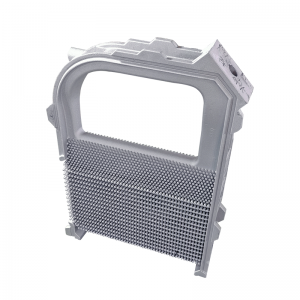Δεκ . 14, 2024 19:28 Back to list
Precision Casting Components from a Reliable Lost Wax Casting Factory for Your Needs
The Art and Precision of Lost Wax Casting A Look into Factory Operations
Lost wax casting, also known as investment casting, is a time-honored technique that has been employed for thousands of years to create intricate metal parts and sculptures. This process involves creating a wax model of the desired object, encasing it in a mold, and then melting away the wax to leave a cavity for molten metal. This age-old method has found a significant place in various industries, including jewelry, automotive, aerospace, and art. In this article, we will explore the workings of a lost wax casting parts factory, shedding light on its processes, benefits, and applications.
The Casting Process
At the heart of any lost wax casting factory is the meticulous process of producing precision parts. The journey begins with the design phase, where engineers or artisans create detailed blueprints of the desired part. This design is then translated into a wax model. The level of detail achievable in this model is one of the standout features of lost wax casting, allowing for complex shapes and fine features that would be challenging with other manufacturing methods.
Once the wax model is complete, it is coated with a ceramic material to create a mold. This coating process typically involves several layers, with the mold being baked to harden the ceramic around the wax. The molds are then preheated, which helps the metal flow smoothly when poured in. The wax is subsequently melted and drained away, leaving a hollow cavity in the shape of the desired part.
The next step involves pouring molten metal into the mold. The choice of metal can vary widely depending on the application, ranging from bronze and brass to aluminum and titanium. Each type of metal has unique properties that make it suitable for specific uses, such as strength, weight, or corrosion resistance.
After the metal has cooled and solidified, the molds are broken away, revealing the cast parts. Finishing processes, such as sandblasting, grinding, and polishing, may follow to ensure that the final product meets the desired quality standards.
Advantages of Lost Wax Casting
The lost wax casting process offers several advantages that make it an appealing choice for manufacturers. First and foremost, the precision and detail it allows are unmatched, making it ideal for complex geometries. This level of accuracy reduces the need for additional machining and minimizes material waste, thereby enhancing cost-efficiency.
lost wax casting parts factory

Another significant benefit is the versatility of materials that can be used. Factories can work with a variety of metals and alloys, tailoring the properties of the final product to meet specific functional requirements. This adaptability makes lost wax casting suitable for an array of applications, from intricate jewelry to robust aerospace components.
Moreover, lost wax casting is conducive to producing small batches of parts without the need for expensive tooling
. This flexibility is especially advantageous for industries that require custom parts or prototype development, allowing for quicker turnarounds and reduced lead times.Applications Across Industries
The applications of lost wax casting are vast and varied. In the jewelry industry, artisans frequently turn to this method to create elaborate designs that capture the eye and reflect the skill of the maker. Each piece can be a unique work of art, showcasing intricate details that resonate with consumers.
In the aerospace and automotive sectors, lost wax casting is used to manufacture critical components that withstand high temperatures and stress. Precision-engineered parts created through this method contribute to the safety and performance of aircraft and vehicles.
Furthermore, the medical industry benefits from lost wax casting in producing surgical tools and implants that require high precision and biocompatibility. These parts must meet stringent regulations, and the accuracy of the lost wax process ensures they are fit for purpose.
Conclusion
The lost wax casting process is a fine blend of artistry and engineering precision. Factories dedicated to this method play a crucial role in producing high-quality, detailed parts used in multiple industries. As technology continues to evolve, the process remains relevant, adapting to modern needs while preserving its foundational techniques. Whether crafting a delicate piece of jewelry or a robust aerospace component, lost wax casting exemplifies the ingenuity of human craftsmanship and the pursuit of excellence in manufacturing. This enduring technique not only highlights the capabilities of modern factories but also honors a tradition that has withstood the test of time.
-
Durable Cast Steel Concrete Pipe Mold Bottom Rings & Base Trays
NewsAug.23,2025
-
Centrifugally Cast Iron Water Main Pipe for Reliable Mains
NewsAug.22,2025
-
Durable Centrifugally Cast Iron Water Main Pipe
NewsAug.11,2025
-
Centrifugally Cast Iron Water Main Pipes for Reliability
NewsAug.10,2025
-
High-Quality Centrifugally Cast Iron Water Main Pipes
NewsAug.09,2025
-
Durable Cast Iron Water Main Pipe & Drainage Solutions
NewsAug.08,2025


